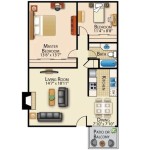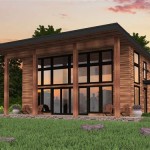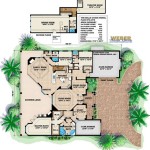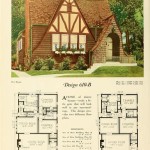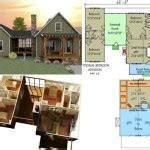A pool house plan refers to a set of architectural blueprints and specifications that outline the design, layout, and construction details of a pool house, a structure typically built adjacent to a swimming pool.
Pool houses serve multiple purposes, including providing shelter from the sun and rain, storing pool equipment and supplies, and offering additional living space for relaxation or entertaining guests. They can range in size and complexity from simple, enclosed structures to elaborate, multi-room designs with amenities such as kitchens, bathrooms, and outdoor seating areas.
When planning a pool house, careful consideration should be given to its location, size, and style to ensure it complements the existing landscape and meets the specific needs of the homeowner.
When planning a pool house, there are several important points to consider:
- Location
- Size
- Style
- Amenities
- Storage
- Lighting
- Privacy
- Budget
- Building codes
By carefully considering these factors, you can create a pool house plan that meets your specific needs and enhances your outdoor living space.
Location
The location of your pool house is one of the most important considerations when planning your pool house plan. The ideal location will depend on a number of factors, including the size and shape of your property, the location of your pool, and your personal preferences.
One important factor to consider is the proximity of the pool house to the pool. You want the pool house to be close enough to the pool to be convenient, but not so close that it feels cramped or crowded. You also want to make sure that the pool house is not located in an area that is prone to flooding or other water damage.
Another important factor to consider is the amount of sunlight that the pool house will receive. If you plan on using the pool house for sunbathing or relaxing, you will want to choose a location that gets plenty of sunlight. However, if you are planning on using the pool house for storage or entertaining, you may want to choose a location that is more shaded.
Finally, you will also want to consider the privacy of the pool house. If you want the pool house to be a private retreat, you will want to choose a location that is not visible from the street or from neighboring properties. However, if you plan on using the pool house for entertaining, you may want to choose a location that is more visible and accessible to guests.
By carefully considering all of these factors, you can choose the ideal location for your pool house.
Size
The size of your pool house will depend on a number of factors, including the size of your property, the size of your pool, the number of people you plan to accommodate, and your budget.
If you have a small property, you will need to choose a pool house that is relatively small so that it does not overwhelm the space. However, if you have a large property, you can choose a larger pool house that will provide more space for relaxation and entertaining.
The size of your pool will also affect the size of your pool house. If you have a large pool, you will need a larger pool house to accommodate all of the necessary equipment and supplies. However, if you have a small pool, you can choose a smaller pool house that will be more proportionate to the size of the pool.
Finally, you will also need to consider the number of people you plan to accommodate in your pool house. If you plan on using the pool house for entertaining, you will need to choose a pool house that is large enough to accommodate your guests comfortably. However, if you only plan on using the pool house for your own personal use, you can choose a smaller pool house that will be more intimate and cozy.
By carefully considering all of these factors, you can choose the ideal size for your pool house.
Style
The style of your pool house should complement the style of your home and the overall landscape design of your property. If your home is traditional in style, you may want to choose a pool house with a classic design, such as a Cape Cod or Colonial style. If your home is more contemporary in style, you may want to choose a pool house with a more modern design, such as a minimalist or mid-century modern style.
In addition to the overall style of your home, you should also consider the materials that you use to build your pool house. If you live in a warm climate, you may want to use materials that are resistant to heat and moisture, such as stucco or stone. If you live in a cold climate, you may want to use materials that are well-insulated, such as wood or brick.
Finally, you should also consider the color of your pool house. If you want your pool house to blend in with the surrounding landscape, you may want to choose a neutral color, such as white or beige. If you want your pool house to stand out, you may want to choose a brighter color, such as blue or green.
By carefully considering all of these factors, you can choose a pool house style that complements your home and your personal preferences.
Amenities
Pool houses can be equipped with a variety of amenities to make them more comfortable and enjoyable to use. Some of the most popular amenities include:
- Kitchen
A kitchen is a great amenity for pool houses, especially if you plan on entertaining guests. A kitchen can be used to prepare snacks and drinks, and it can also be used to store food and drinks. When planning a kitchen for your pool house, be sure to include a refrigerator, a sink, and a countertop.
- Bathroom
A bathroom is another important amenity for pool houses. A bathroom can be used to change clothes, shower, and use the toilet. When planning a bathroom for your pool house, be sure to include a toilet, a sink, and a shower.
- Outdoor shower
An outdoor shower is a great way to rinse off after swimming in the pool. An outdoor shower can be located on the side of the pool house or on a nearby patio. When planning an outdoor shower for your pool house, be sure to include a shower head, a mixing valve, and a drain.
- Fireplace
A fireplace is a great way to add warmth and ambiance to a pool house. A fireplace can be used to heat the pool house on cold nights, and it can also be used to create a cozy atmosphere for entertaining guests. When planning a fireplace for your pool house, be sure to include a chimney, a firebox, and a mantel.
These are just a few of the many amenities that can be added to a pool house. When planning your pool house, be sure to consider the amenities that are important to you and your family.
Storage
Pool houses can be used to store a variety of items, including pool equipment, supplies, and personal belongings. When planning a pool house, be sure to include adequate storage space to keep all of your items organized and out of the way.
- Pool equipment
Pool equipment, such as pumps, filters, and chlorinators, can be stored in a pool house to keep it out of the weather and away from children and pets. When planning a pool house, be sure to include a dedicated space for pool equipment storage. This space should be large enough to accommodate all of your pool equipment, and it should be well-ventilated to prevent the buildup of moisture and mold.
- Pool supplies
Pool supplies, such as chemicals, cleaning supplies, and toys, can also be stored in a pool house. When planning a pool house, be sure to include shelves or cabinets to store pool supplies. These shelves or cabinets should be located in a convenient location, and they should be large enough to accommodate all of your pool supplies.
- Personal belongings
Personal belongings, such as towels, sunscreen, and sunglasses, can also be stored in a pool house. When planning a pool house, be sure to include a dedicated space for personal belongings storage. This space can be a closet, a cabinet, or a set of shelves. It should be located in a convenient location, and it should be large enough to accommodate all of your personal belongings.
- Seasonal items
Seasonal items, such as pool covers and patio furniture, can also be stored in a pool house. When planning a pool house, be sure to include a dedicated space for seasonal item storage. This space can be a closet, a cabinet, or a shed. It should be located in a convenient location, and it should be large enough to accommodate all of your seasonal items.
By including adequate storage space in your pool house plan, you can keep all of your pool equipment, supplies, and personal belongings organized and out of the way.
Lighting
Proper lighting is essential for any pool house, as it can create a safe, inviting, and enjoyable space. When planning your pool house lighting, there are a few things to keep in mind:
- Safety first
Safety should be your top priority when planning your pool house lighting. Make sure all areas of your pool house are well-lit, especially areas where people are likely to walk or swim. This includes the pool deck, the steps leading into the pool, and the area around the pool equipment.
- Create a welcoming atmosphere
The lighting in your pool house should be inviting and welcoming. Avoid using harsh or glaring lights, and instead opt for softer, more diffuse lighting. This will create a more relaxed and comfortable atmosphere for your guests.
- Consider the purpose of the space
When planning your pool house lighting, consider how the space will be used. If you plan on using the pool house for entertaining, you will need to provide more lighting than if you only plan on using it for storage. You may also want to consider adding dimmer switches to the lights so that you can adjust the brightness depending on the occasion.
- Don’t forget about the exterior
The lighting outside your pool house is just as important as the lighting inside. Make sure the exterior of your pool house is well-lit so that guests can safely enter and exit the space. You may also want to consider adding landscape lighting to enhance the beauty of your pool area.
By following these tips, you can create a well-lit pool house that is safe, inviting, and enjoyable for everyone.
Privacy
Privacy is an important consideration when planning a pool house. If you want to create a private retreat, there are a few things you can do:
- Choose a secluded location
The location of your pool house will have a big impact on its privacy. If you want a private pool house, choose a location that is not visible from the street or from neighboring properties. You may also want to consider adding a fence or hedge around your pool house to create a more private space.
- Add privacy screens
Privacy screens can be used to block the view of your pool house from the outside world. Privacy screens can be made from a variety of materials, such as wood, bamboo, or fabric. They can be attached to the pool house itself or to the surrounding fence or hedge.
- Plant trees and shrubs
Trees and shrubs can also be used to create privacy around your pool house. When planting trees and shrubs, choose varieties that are native to your area and that will grow to a height that will block the view of your pool house from the outside world.
- Use curtains or blinds
Curtains or blinds can be used to block the view of your pool house from the inside. Curtains or blinds can be made from a variety of materials, such as fabric, vinyl, or wood. They can be hung from the ceiling or from the walls of your pool house.
By following these tips, you can create a private pool house that is perfect for relaxing and enjoying your time in the sun.
Budget
The budget for your pool house will depend on a number of factors, including the size of the pool house, the materials used to build it, the amenities included, and the cost of labor in your area.
- Size
The size of your pool house will have a significant impact on the cost. A larger pool house will require more materials and labor to build, which will increase the overall cost.
- Materials
The materials used to build your pool house will also affect the cost. Some materials, such as wood and vinyl, are less expensive than others, such as stone and brick. The type of roofing material you choose will also affect the cost.
- Amenities
The amenities you include in your pool house will also affect the cost. A pool house with a kitchen, bathroom, and fireplace will be more expensive than a pool house with no amenities.
- Labor
The cost of labor will vary depending on your location and the availability of skilled workers in your area. In general, the cost of labor will be higher in urban areas than in rural areas.
It is important to set a realistic budget for your pool house before you begin construction. This will help you avoid overspending and ensure that you have the funds to complete the project. Once you have a budget, you can start to make decisions about the size, materials, amenities, and labor costs for your pool house.
Building codes
Building codes are regulations that govern the construction of buildings and other structures. These codes are in place to ensure that buildings are safe and habitable, and to protect the public from hazards such as fire, structural collapse, and electrical shock.
When planning a pool house, it is important to be aware of the building codes that apply to your area. These codes will vary depending on the jurisdiction, but they typically cover a wide range of topics, including:
- Structural requirements
Structural requirements ensure that buildings are able to withstand the loads that they are likely to experience, such as wind, snow, and earthquakes. These requirements will specify the minimum size and strength of structural members, such as beams, columns, and foundations.
- Fire safety requirements
Fire safety requirements are designed to prevent and mitigate the spread of fire in buildings. These requirements will specify the types of materials that can be used in construction, the installation of smoke detectors and fire sprinklers, and the provision of fire escape routes.
- Electrical safety requirements
Electrical safety requirements are designed to prevent electrical shock and fires. These requirements will specify the types of electrical wiring and equipment that can be used, the installation of electrical outlets and switches, and the grounding of electrical systems.
- Plumbing safety requirements
Plumbing safety requirements are designed to ensure that plumbing systems are safe and sanitary. These requirements will specify the types of plumbing materials that can be used, the installation of plumbing fixtures and appliances, and the provision of adequate drainage.
By following the building codes, you can help to ensure that your pool house is safe and habitable. You can also avoid costly delays and fines during the construction process.
In addition to the general building codes, there may also be specific codes that apply to pool houses. These codes may cover topics such as the design and construction of pools, the installation of pool equipment, and the safety of pool users. It is important to be aware of these codes before you begin planning your pool house.
You can find information about the building codes that apply to your area by contacting your local building department. The building department can provide you with copies of the codes and can answer any questions you may have.










Related Posts

